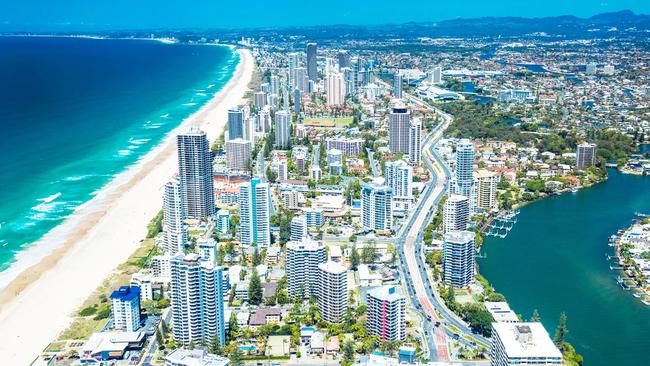Queensland election: Labor’s targeted seats ‘most coronavirus-hit’
The Gold and Sunshine coasts are the two areas in Queensland whose local economies have been most affected by the coronavirus pandemic.

The Gold and Sunshine coasts are the two areas in Queensland whose local economies have been most affected by the coronavirus pandemic, but these are the areas where the Palaszczuk government needs to pick up seats to counter expected losses in north Queensland.
Lockdowns associated with coronavirus have hit the tourism industry hard, especially in southeast Queensland, with the closure of interstate and national borders cutting off the free flow of tourists from other parts of Australia as well as overseas.
Premier Annastacia Palaszczuk and Opposition Leader Deb Frecklington have visited both coasts in the past few days, with Labor promoting its handling of the coronavirus pandemic as an election issue.
Figures released on Thursday by the Australian Bureau of Statistics show the Gold Coast lost 19,000 jobs in the 12 months to the end of September, the highest number in Queensland, while the Sunshine Coast had the second-highest with 7000 less.
The ABS figures show that the Gold Coast’s labour force in September 2019 was 342,700 but in September this year it was 323,800.
There are 22,000 people on the Gold Coast who are now unemployed, with most of the job losses occurring since April. Young people were the most affected, with more than 9000 fewer jobs for young people in the Gold Coast labour force compared with September a year earlier.
The Gold Coast is the major destination in Queensland for overseas tourists, with more than one million international visitors arriving annually before coronavirus hit, and about four million domestic visitors.
On the Sunshine Coast to the north of Brisbane, workforce numbers dropped from 187,000 in September last year to 180,000 now.
The job losses were felt more heavily on the Sunshine Coast among men than women, with 5000 men and 2000 women.
The effect of the drop-off in tourism because of coronavirus was more pronounced on the Sunshine Coast than the Gold Coast, with virtually all job losses on the Sunshine Coast in the 12 months occurring since April.
Wide Bay, which consists of the Fraser Coast and Fraser Island and has mainly domestic visitors, dropped 5800 jobs over the 12-month period and has the highest rate of unemployment in Queensland at 9.5 per cent, well ahead of the statewide average of 7.7 per cent.
North Queensland’s tourism industry does not seem to have been as affected as southeast Queensland by the shutdown, with the labour force in Cairns growing by 3600 over the 12 months to September, and in the Whitsunday/Mackay region by 4100.
The two coasts have become vital to the ALP’s chances in the coming election. While the party is struggling to keep its seats in Townsville, Cairns and Rockhampton, its hope rests in picking up seats on the Gold and Sunshine Coasts.



To join the conversation, please log in. Don't have an account? Register
Join the conversation, you are commenting as Logout